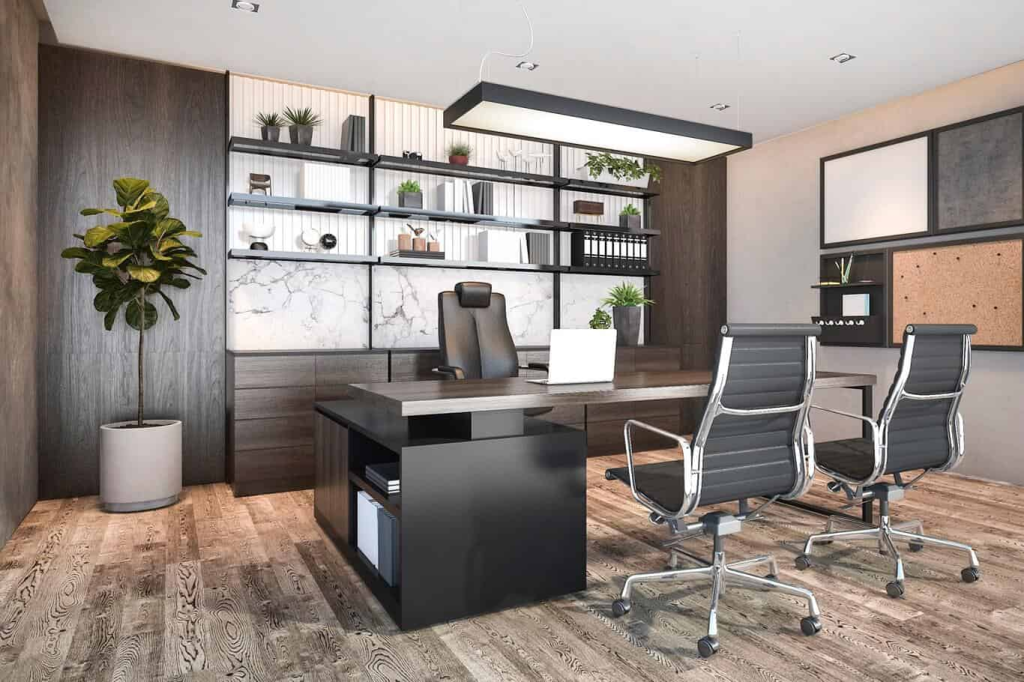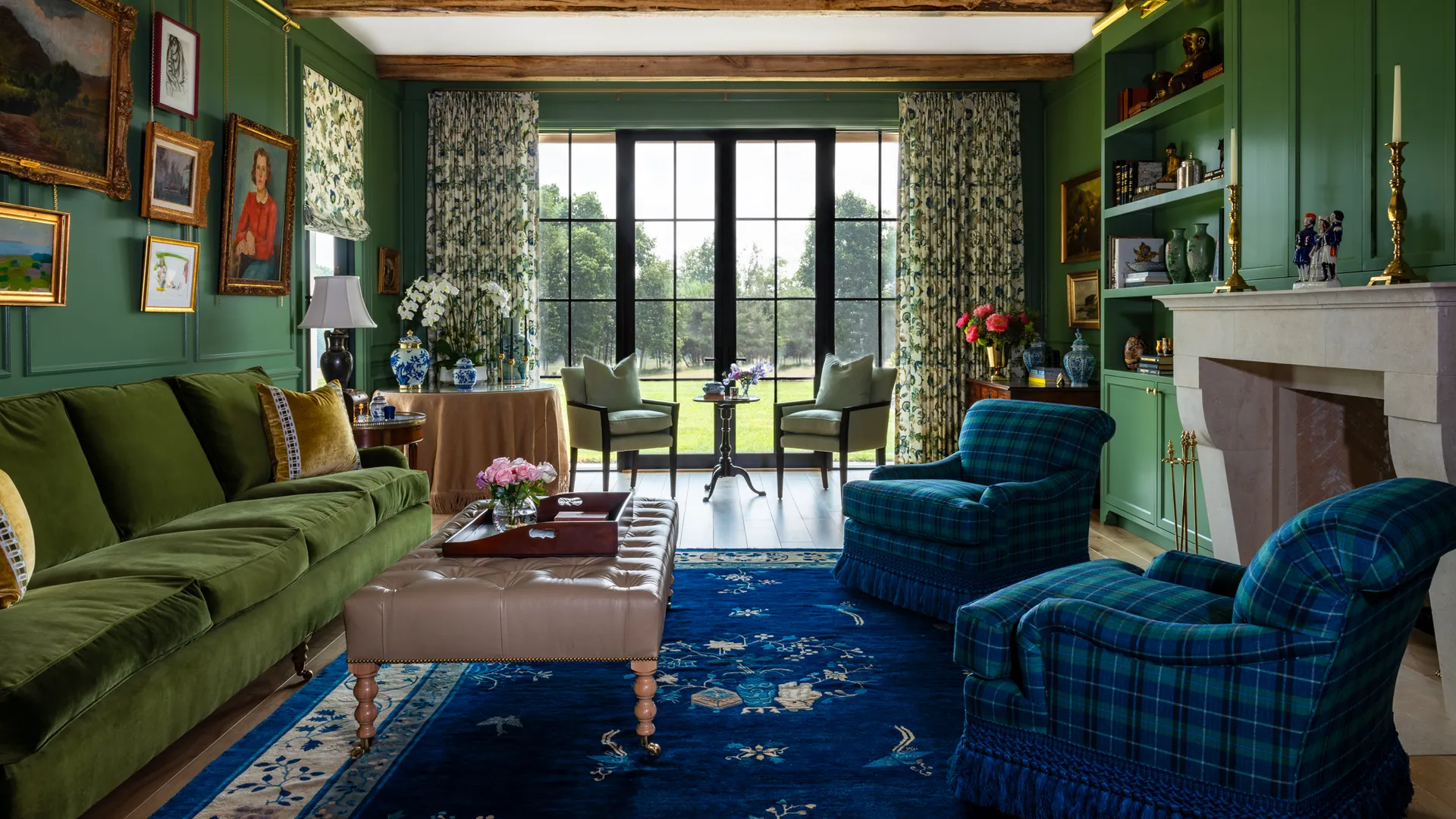
Interior Designs goes beyond aesthetics; it encompasses the atmosphere and functionality of a space. A thoughtfully crafted interior improves life quality and showcases the character of its residents. Whether you’re updating your bedroom, planning an office, or beautifying a café, excellent Interior Designs can work wonders.
Home Interior Designs
The goal of home interior design is to create a space that reflects who you are, how you live, and what makes you feel at ease. Interior design is more than just arranging furniture or selecting the right paint color. It transforms a house into a home by combining beauty, function, and personality in every room.
At its core, interior design is storytelling. Each item of furniture, selection of colors, and decorative piece conveys a segment of your narrative. Whether you prefer clean modern lines, rustic farmhouse charm, timeless elegance, or eclectic creativity, your interior designs should reflect your lifestyle and taste.
A well-designed home balances form and function. It considers how each room will be used while also focusing on how it feels. For instance, the living room could be decorated with warm tones, layered lighting, and cushy sofas to encourage conversation and relaxation. The kitchen—often the heart of the home—should be both practical and inviting, with smart storage solutions, durable materials, and a touch of personality through textures and accents.
Bedrooms are sanctuaries of rest and reflection. Thoughtful lighting, calming colors, and soft textiles like linen or cotton help create a restful environment. In contrast, work-from-home spaces should boost focus and motivation through clever layout choices, good lighting, and ergonomic furniture.
Harmony is one of the most important aspects of interior design. A harmonious home flows smoothly from room to room, with a cohesive color palette, consistent materials, and balanced proportions. But this doesn’t mean every space must look the same—variation is what adds depth and character. Accent walls, artwork, patterns, and unique furniture pieces bring individuality and life to a home.
Natural elements are increasingly evident in modern home design. Plants, wood, stone, and natural fabrics not only enhance the aesthetic but also create a calming, biophilic connection to the outdoors. Similarly, eco-friendly paints, repurposed furniture, and energy-efficient lighting are becoming increasingly important to homeowners today when it comes to sustainable design choices. Lighting is another essential aspect. A combination of ambient (general), task (functional), and accent (decorative) lighting can significantly alter the atmosphere of a space. Think soft pendant lights over a dining table, wall sconces in a hallway, or a statement chandelier in the entryway—each contributes to the home’s overall feel.
In the end, great interior design is not about following every trend—it’s about designing a home that works for your life and evolves with it. It’s about comfort, expression, and creating a place where you feel truly at home.
Whether you’re building from scratch, renovating, or simply refreshing a single room, good interior design enhances your daily life and makes your space uniquely yours.
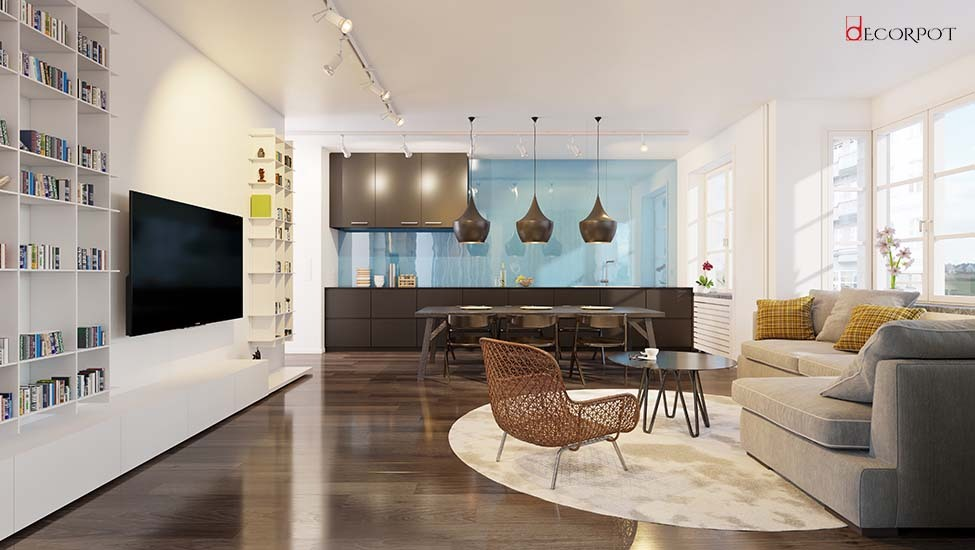
Kitchen:
The kitchen serves as more than merely a cooking area—it’s the center of the household. It’s the place where dishes are prepared, dialogues start, and memories are formed. An effectively designed kitchen strikes a harmony between practicality and aesthetics, ensuring it is suitable for everyday activities while also being inviting for loved ones.
Kitchen interior design emphasizes enhancing layout, streamlining movement, and selecting finishes and features that embody your way of life. Whether dealing with a small apartment kitchen or a large open-concept design, effective Interior Designs guarantees that everything is organized—and visually appealing at the same time.
A crucial element of kitchen design is the arrangement. Well-liked designs such as the L-shape, U-shape, galley, and island kitchens are created to enhance mobility while ensuring that everything is accessible. The “kitchen work triangle”—the layout of the sink, stove, and refrigerator—continues to be an essential guideline for facilitating an efficient cooking experience.
Kitchens in 2025 focus on merging contemporary comfort with classic elegance. Alcune delle tendenze più in voga includono:
Handleless cabinetry, integrated appliances, and neutral shades define minimalist kitchens, creating a tidy, unobstructed atmosphere.
Kitchens in farmhouse style featuring shaker cabinets, rustic wooden elements, and open shelving to bring warmth and charm.
Contemporary culinary spaces featuring metallic surfaces, concrete worktops, and visible fittings for a striking, metropolitan style.
Kitchens inspired by Scandinavian design that focus on simplicity, practicality, and natural illumination, featuring gentle wood hues and subdued shades.
In terms of materials and finishes, quality is essential. Granite or quartz countertops are aesthetically pleasing and long-lasting. Cabinetry made from wood or MDF, featuring matte or high-gloss finishes, enhances character. Subway tile, marble, or patterned ceramic backsplashes not only shield the walls but also act as a centerpiece.
Color also has a significant impact. Although traditional white kitchens remain timeless, homeowners are increasingly embracing bolder choices.
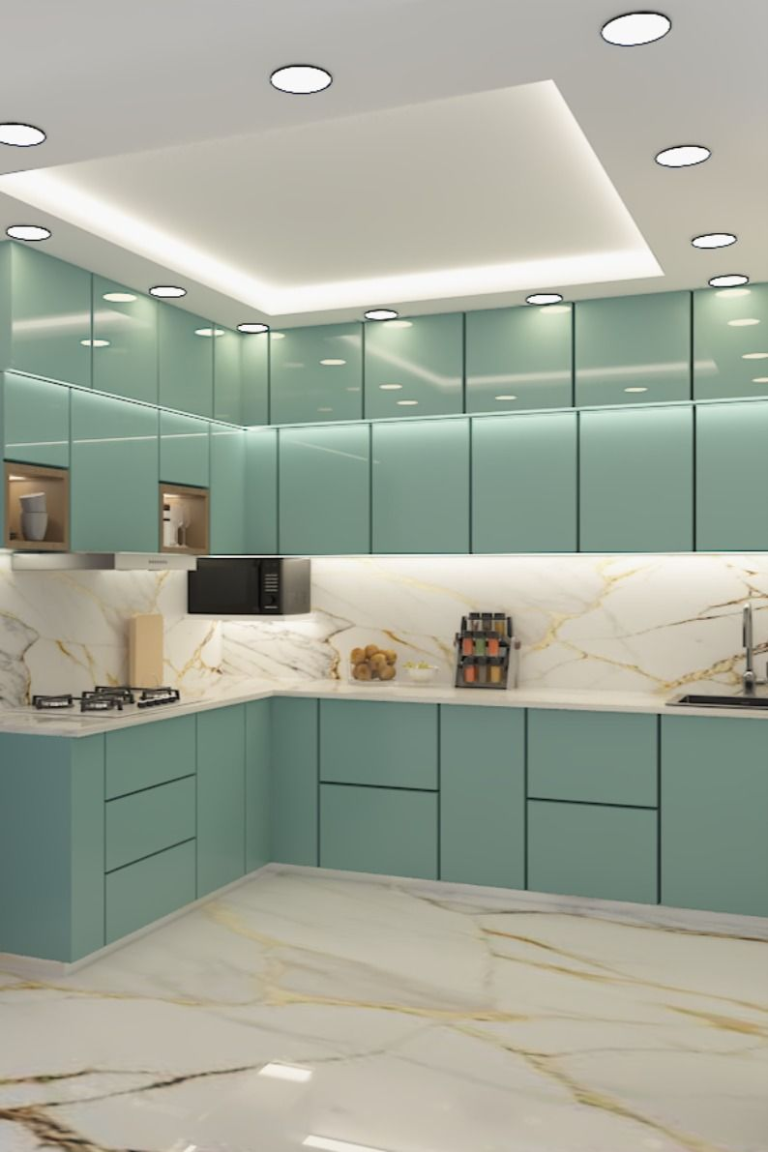
Bedroom:
The bedroom is among the most private areas in any house. It’s the spot where we start and finish every day—a space to relax, rejuvenate, and escape from reality. That’s why bedroom interior design goes beyond mere appearance—it focuses on crafting an environment that encourages relaxation, comfort, and tranquility, while also showcasing your unique style.
A thoughtfully crafted bedroom harmonizes utility and atmosphere. Every detail, from bed positioning and lighting to material selection and color scheme, must harmonize to establish a soothing and inviting environment.
The bed is undoubtedly the cornerstone of every bedroom. It acts as the centerpiece of the space and must provide both aesthetic charm and physical coziness. In 2025, upholstered headboards remain a favored option, bringing softness and texture to the space. Dressing the bed with soft pillows, airy fabrics, and warm blankets results in a welcoming, homey appearance.
Color significantly influences bedroom Interior Designs. Gentle, subtle shades such as beige, light gray, subdued greens, and warm taupe can foster a feeling of tranquility and peace. Conversely, deep shades such as navy, forest green, or charcoal can introduce drama and richness while preserving a calming atmosphere. Accent walls or textured wallpapers provide a discreet method to add intrigue without cluttering the area.
Lighting is essential for creating the appropriate atmosphere. A mix of ambient lighting (like a central ceiling fixture), task lighting (such as bedside lamps), and accent lighting (including LED strips or wall sconces) provides versatility. Dimmer switches are an excellent enhancement for modifying the light based on your requirements—intense for reading, gentle for relaxation.
For furniture, the aim is to remain practical while staying minimalistic. Nightstands, chests of drawers, and closets must offer sufficient storage while avoiding mess.
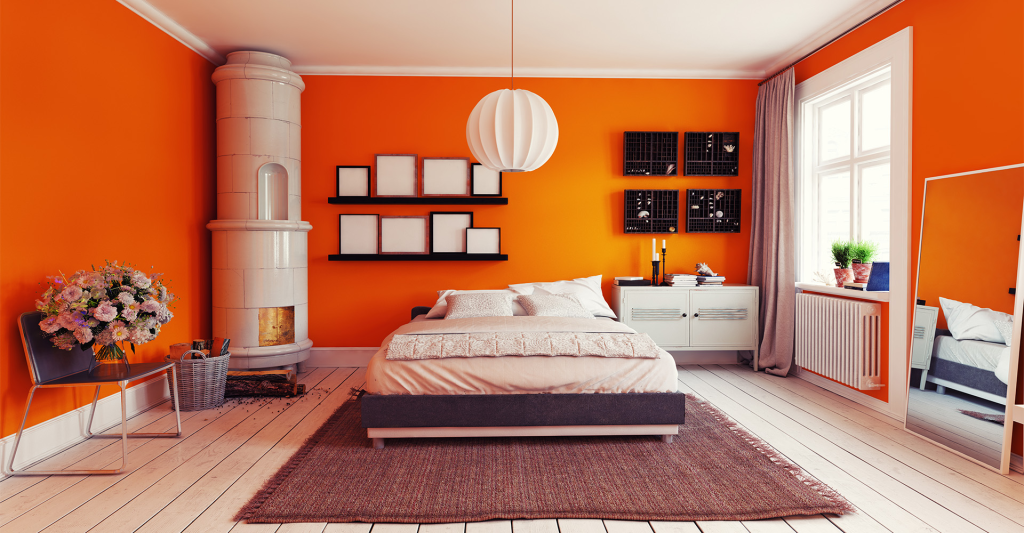
Living Room Interior Designs
The living room is frequently seen as the core of the house—an area where relatives come together, visitors are received, and daily life takes place. It’s a space that combines practicality with coziness and fulfills various purposes: a spot to unwind, host gatherings, connect with others, and occasionally work. This is why the Interior Designs of the living room is essential in influencing the overall ambiance of your home.
A thoughtfully designed living room goes beyond looking good—it’s practical, adaptable, and brimming with character. The essential factor is achieving the perfect blend of aesthetics and functionality, all while customizing the area to embody your unique way of living.
The arrangement is the basis for effective living room design. Regardless of whether you possess a large open-plan space or a small city flat, the layout of furniture should facilitate smooth movement and dialogue. Couches, recliners, and coffee tables need to be arranged to create a comfortable and inviting atmosphere, typically oriented around a central feature such as a fireplace, television, or striking artwork.
Selecting the appropriate furniture is crucial. Sofas need to be cozy and appropriately sized for the room. Modular sofas suit contemporary living, providing versatility in arranging your area. Accent chairs, ottomans, and side tables can be combined to form a flexible seating space. Integrated or standalone storage options, such as bookcases or media cabinets, assist in maintaining an organized and tidy space.
Color significantly influences the atmosphere. In 2025, warm taupe, muted terracotta, soft greens, and creamy neutrals in earthy tones are popular, infusing the area with warmth and tranquility. To achieve a bolder appearance, deep blues, dark charcoal, or vibrant jewel tones such as emerald and rust can enhance depth and elegance. An expertly arranged color scheme creates balance, particularly when applied to walls, furniture, fabrics, and decorations.
Lighting changes the atmosphere of a living room.

Office Interior Designs
Office interior design significantly influences how individuals work, think, and experience their environment. An effectively designed office goes beyond looks; it aims to foster an atmosphere that enhances concentration, facilitates teamwork, boosts employee health, and mirrors the organization’s values and culture.
Regardless of whether it’s a corporate headquarters, a small business office, or a home workspace, interior design influences productivity, mood, and performance directly. In the rapidly changing work environment of today, an office’s design needs to be adaptable, practical, and motivational.
Central to office design is the arrangement. A successful floor plan takes into account both teamwork and focus. Open-plan areas enhance collaboration and communication, yet quiet zones and private meeting spaces are crucial for activities necessitating intense concentration or privacy. Contemporary offices frequently adopt a hybrid design—merging open workstations, communal lounges, and private work pods to accommodate various work preferences.
Ergonomics is another fundamental principle. Cozy chairs, flexible desks, and appropriate lighting are essential, not luxuries. An inadequately designed workstation may result in tiredness, pain, and potential injury as time passes. A well-designed workspace enhances employee happiness and decreases absenteeism.
Hue and illumination significantly influence emotions in the workplace. Well-illuminated areas filled with ample natural light are shown to enhance mood and increase productivity. Color psychology is taken into account in office design—cool hues such as blue and green encourage calmness and concentration, whereas warmer shades like yellow or orange can invigorate and inspire creativity. Neutral color schemes, combined with thoughtful accents, create a professional yet welcoming ambiance.
In 2025, trends in office design focus on biophilic design—incorporating nature into the work environment. Natural illumination, houseplants, vertical gardens, wooden surfaces, and nature-themed textures establish a revitalizing and harmonious environment. These components contribute to lowering stress and enhancing air quality, making the workspace appear more human and less clinical.
